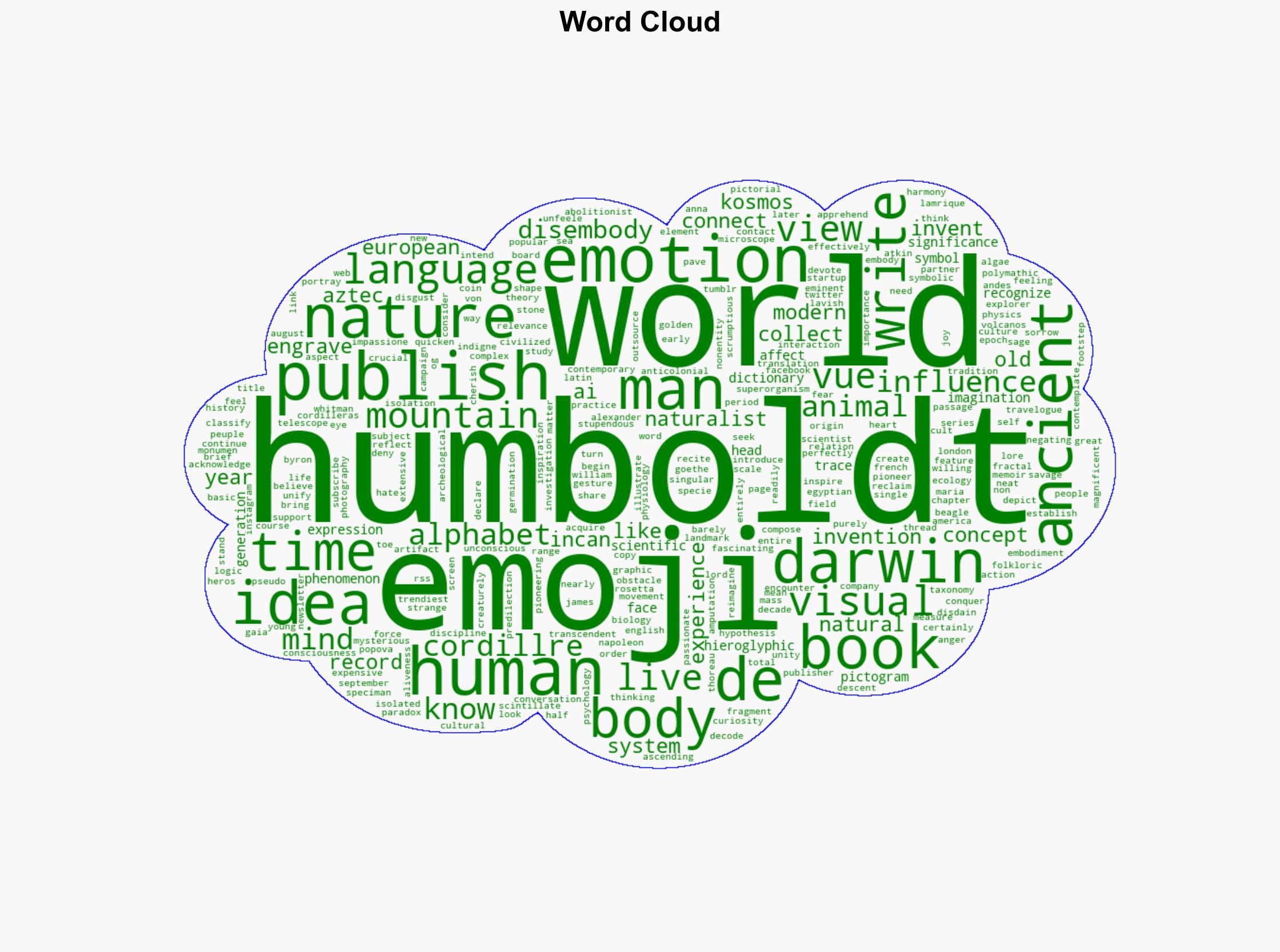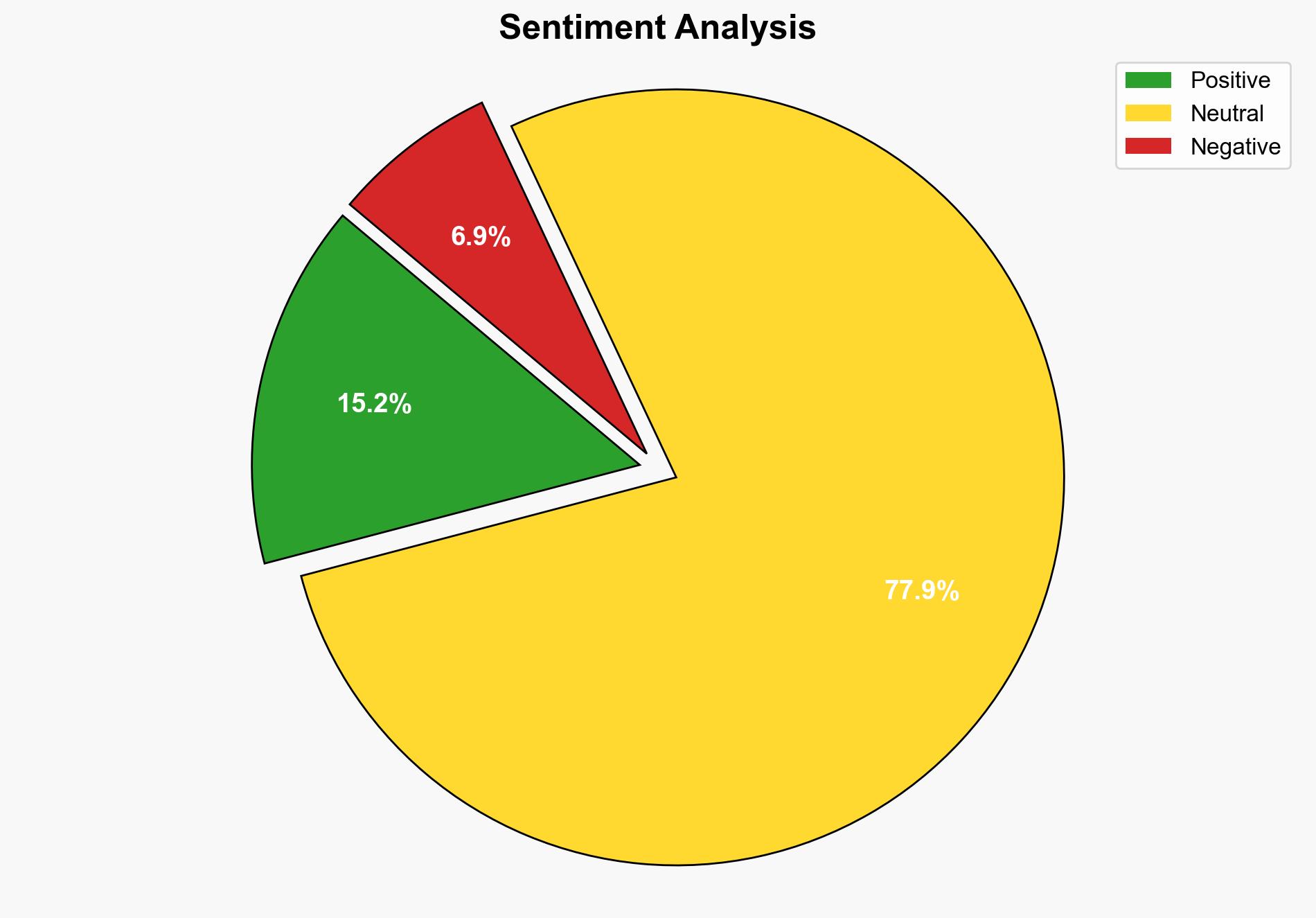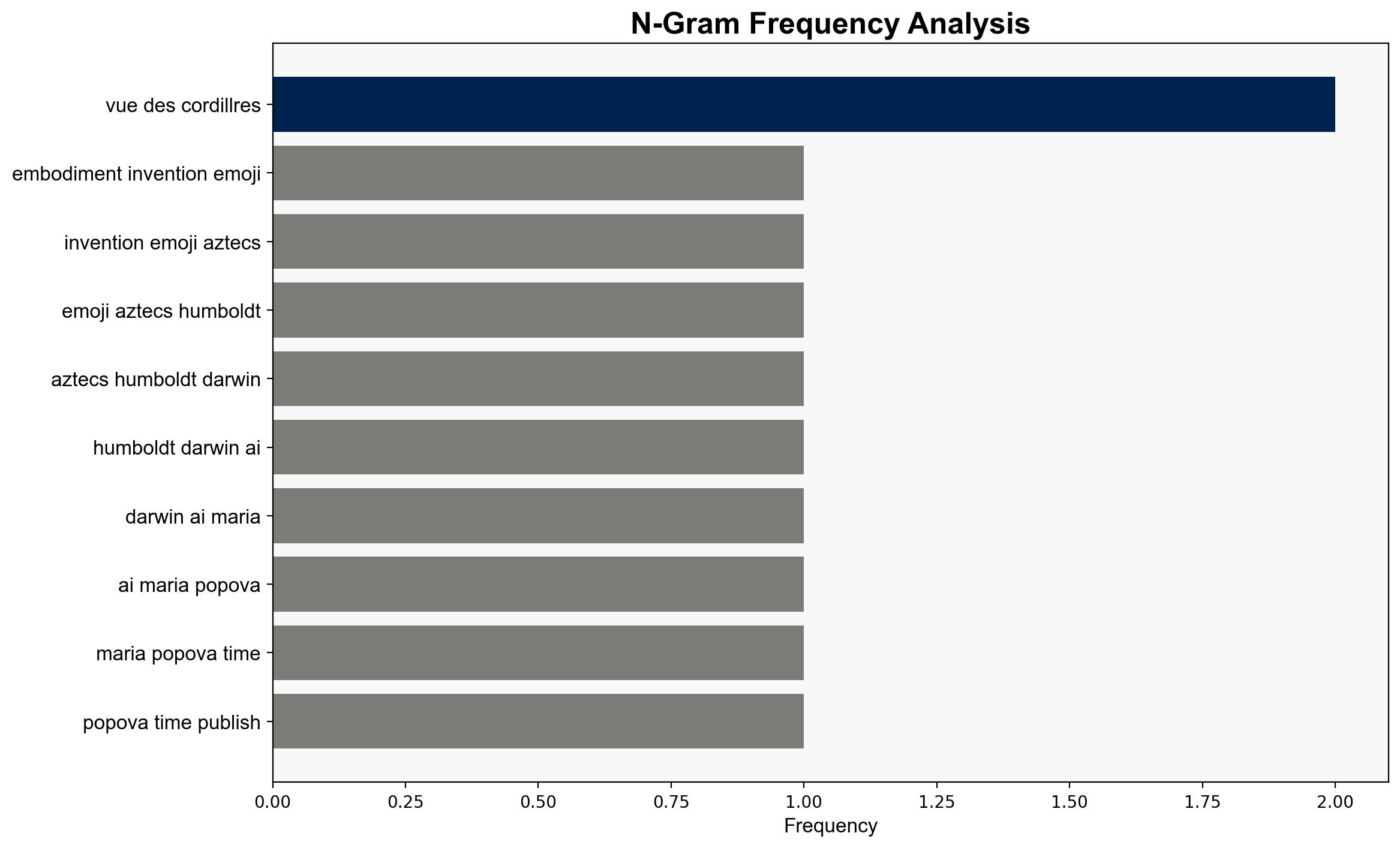Embodiment and the Reinvention of Emoji from the Aztecs to Humboldt and Darwin to AI – Themarginalian.org
Published on: 2025-08-31
Intelligence Report: Embodiment and the Reinvention of Emoji from the Aztecs to Humboldt and Darwin to AI – Themarginalian.org
1. BLUF (Bottom Line Up Front)
The analysis suggests that the historical evolution of visual language, from ancient pictograms to modern emojis, reflects a continuous human effort to encapsulate complex emotions and ideas in simple, universal symbols. The most supported hypothesis is that this evolution is driven by a fundamental human need for efficient communication across cultural and temporal boundaries. Confidence Level: Moderate. Recommended action includes further interdisciplinary research to explore the implications of visual language on modern communication technologies and AI development.
2. Competing Hypotheses
1. **Hypothesis A**: The evolution of visual language, including emojis, is primarily a cultural phenomenon driven by historical figures like Humboldt and Darwin, who recognized the power of visual symbols in bridging cultural divides and enhancing scientific communication.
2. **Hypothesis B**: The development of visual language is a technological inevitability, accelerated by advancements in AI and digital communication, which necessitate new forms of expression to accommodate the rapid exchange of information.
Using the Analysis of Competing Hypotheses (ACH) 2.0, Hypothesis A is better supported by historical evidence of influential figures using visual symbols to communicate complex ideas. Hypothesis B lacks historical precedent but is supported by current technological trends.
3. Key Assumptions and Red Flags
– **Assumptions**: Both hypotheses assume a linear progression of communication methods and overlook potential nonlinear developments or regressions.
– **Red Flags**: The analysis may suffer from presentism, projecting current technological trends onto historical contexts without sufficient evidence.
– **Blind Spots**: The role of non-Western cultures in shaping visual language is underexplored, potentially skewing the analysis.
4. Implications and Strategic Risks
The evolution of visual language could influence global communication strategies, potentially reducing language barriers but also introducing new forms of miscommunication. The integration of AI in this evolution poses risks of cultural homogenization and loss of linguistic diversity. Geopolitically, nations that adapt quickly to these changes may gain strategic advantages in information dissemination and influence.
5. Recommendations and Outlook
- Encourage interdisciplinary research combining linguistics, technology, and cultural studies to understand the impact of visual language on global communication.
- Scenario Projections:
- Best Case: Visual language enhances global understanding and cooperation.
- Worst Case: Misinterpretations lead to increased cultural tensions and misinformation.
- Most Likely: Gradual integration of visual language into digital communication, with mixed outcomes.
6. Key Individuals and Entities
– Alexander von Humboldt
– Charles Darwin
– Maria Popova
– Anna Atkins
7. Thematic Tags
national security threats, cybersecurity, counter-terrorism, regional focus





